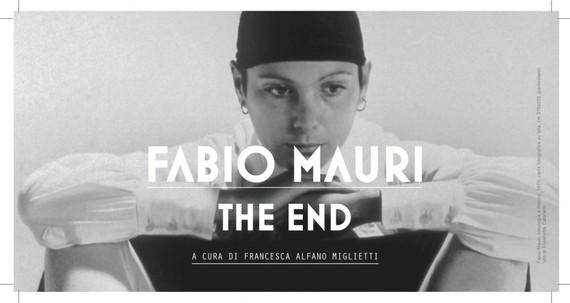Okuwi Enwezo, the director of the Venice Biennale has chosen Italian artist Fabio Mauri as the central artist around which the universal exhibition's curatorial program is going to coalesce later this year. This choice is both timely and excellent due to the fact that Mauri, as an artist, problematized the way humanity deals with political violence at the level of the individual. His conceptualism achieves somethings apparently impossible which is to be experienced at an emotional level. The way, however, his work has been read till now, insists on transforming his pieces into a visual representation of some aspects of continental social philosophy.
A year ago, a retrospective was dedicated to him at the Fundación PROA in my hometown, Buenos Aires where many of the works that will be shown in Venice were included. Three of them are of particular interest. The first one is a performance piece called "Ebrea (Jewess)" from 1971 where a nude young woman is included standing in front of a mirror. For the duration of the piece, the woman cuts off locks of her hair, pasting them in the shape of a Star of David onto the mirror. I don't think it is necessary for me to point out the link to the haircuts given to Auschwitz prisoners on the way to the gas chambers, with simulated hideous objects, such as soap made from corpses and a horse harness fabricated from human skin. Ironically, Nicola Costantino, the artist chosen by the Argentinians to represent them at the Biennale 2013 gained notoriety after producing soap made of human fat sourced from cosmetic surgery. Although the links to Nazi practices were also obvious there, the fact that last year she presented in Venice an installation dedicated to no other than Eva Perón, wife of the Argentine dictator who allegedly financed his presidential campaign allowing Nazis to find exile in Argentina, comes across as ironic. There is a difference, however, between Mauri's and Costantino's performance. While the former aims at creating a psychological environment where horror becomes seductive and, thus, a source of shame, the latter goes a bit too far by glamorizing that horror.
Another of the pieces presented in Venice will be "Evil Numbers", a nonsensical mathematical formula written on a blackboard facing a large photomural of Joseph Goebbels, the Nazi propaganda minister, at the "degenerate art" exhibition at the Haus der Kunst in Munich in 1937. Describing these works by Mauri, Enwezor, who is also the current director of the Haus der Kunst is absolutely right when saying: "They are not like visual events but more like psychological events'.
When I was a child, a man followed me on my way to a school football practice and while on the bus, he approached me, grabbed my hand and rubbed it against his crotch. Even though I ran to the lavatories to wash my hands upon arrival to school, I found myself fantasizing with that moment many times ever since and, in a way, has defined my relationship with gay sex. Similarly, a friend of mine who was raped, told me once that he sometimes goes through the same kind of shamefully erotic feelings. It is like an inverted Stockholm Syndrome that focuses on the feeling instead of the perpetrator. I think that it is precisely that psychological cornice that Mauri's performances invite us to walk. The viewer is immediately forced to participate in actions that are both seductive and shameful maybe that is why Mauri used to say that during his childhood 'even the sun was fascist'.
The decision of the curator of the Venice Biennale to focus on this psychological exploration comes at a time when all the readings of his work have seemed to focus on the way he explored the impossibility of representation after the Holocaust. This is, of course, true but it does not exhaust the possibilities that his works (as art) brings about. An example of this is the informed way in which the Italian curator of the Buenos Aires show, Ivan Barlafante referred to his series of 48 screens hung on a wall in a minimalist fashion, as the result of reducing representation to its minimum transforming them into a mere objects. In Barlafante's attempt to canonize Mauri as a post-war humanist who discussed representation itself as a possibility after the Holocaust, he ends up forgetting about the viewer's experience and, most of all, of his feelings. It is in the paradoxical vicious circle of erotic attraction and humanistic shame that Mauri's response to American Pop Art should be inscribed. His discussion of the role of the media in today's society is not concerned with representation as such (as technical reproduction or serialization) but with the seduction that self harm has in all of us once modernity's optimism is over. J A T


